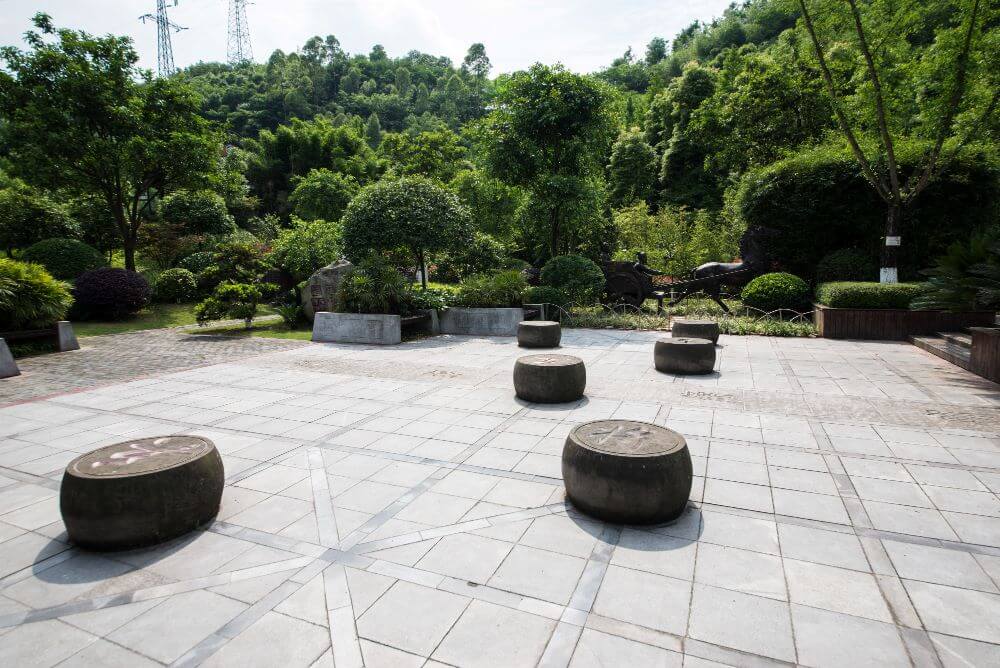Hardscaping enhances outdoor spaces by incorporating non-living features such as patios, walkways, retaining walls, and driveways. These elements add visual appeal and improve a property’s functionality and value.
Besides, understanding hardscaping costs is essential, as they vary widely depending on several factors. Now, let’s explore the key cost drivers, typical price ranges, and practical tips for managing your budget effectively.
Factors Affecting Hardscaping Costs
Material Costs
The choice of material significantly impacts the overall cost of a hardscaping project. Common materials include:
- Concrete: Affordable but less customizable.
- Pavers: More expensive but highly customizable and durable.
- Natural Stone: Premium material with a high-end appearance.
- Gravel: Budget-friendly but less durable for high-traffic areas.
Each material has its installation requirements, which can further affect costs.
Project Size and Scope
Larger projects naturally require more materials and labour, increasing the overall cost. Additionally, the complexity of the design—whether it’s a simple patio or a multi-level outdoor space—can impact pricing.
Labor Costs
Labour costs vary based on the contractor’s experience, location, and the project’s complexity. Skilled labour, especially for intricate designs, will increase costs. On average, labour costs can account for 50% or more of the total project expense.
Design Complexity
Elaborate patterns, multi-level structures, and unique design elements require more time and expertise, leading to higher costs. Features like water elements, built-in lighting, or custom stonework add additional expenses.
Site Preparation
The site must be prepared before hardscaping begins. This may involve excavation, grading, and clearing obstructions like tree roots or debris. Uneven or sloped terrain typically requires additional preparation work, increasing costs.
Permits and Regulations
Check local building codes and permit requirements, especially when planning larger hardscaping features like retaining walls or outdoor kitchens. Permits come with additional fees, and compliance with regulations may involve extra labour or materials.
How to Save on Hardscaping Costs
There are several strategies to reduce hardscaping costs without compromising quality or functionality.
Choose Affordable Materials
Opting for budget-friendly materials like concrete or gravel instead of premium options like natural stone can save you significantly. Additionally, recycled materials may offer cost-effective and sustainable alternatives.
Handle Simple Tasks Yourself
Tackling straightforward tasks like site preparation or cleanup can reduce labour costs. However, to avoid costly mistakes, ensure that professionals handle specialized work.
Schedule Projects Strategically
Many contractors offer discounts during off-peak seasons, such as late fall or winter. Scheduling your project during these times can help you secure lower rates.
Break Projects Into Phases
If you have a large-scale project, consider completing it in phases. This lets you spread costs over time and focus on high-priority areas first.
How Hardscaping Enhances the Value of Your Home
Hardscaping improves the functionality and aesthetics of outdoor spaces and increases property value. Features like patios, pathways, and retaining walls, when well-designed, can significantly improve curb appeal and attract potential buyers. Additionally, durable hardscaping elements require minimal maintenance, providing long-term value.
Key Takeaways
Hardscaping costs vary widely based on materials, project size, and design complexity. By understanding these variables and planning carefully, you can create a beautiful, functional outdoor space that fits your budget.
Whether building a simple pathway or an elaborate outdoor kitchen, investing in quality materials and professional installation ensures lasting satisfaction. Consult a contractor for personalized estimates and explore cost-saving strategies to make the most of your hardscaping project.
